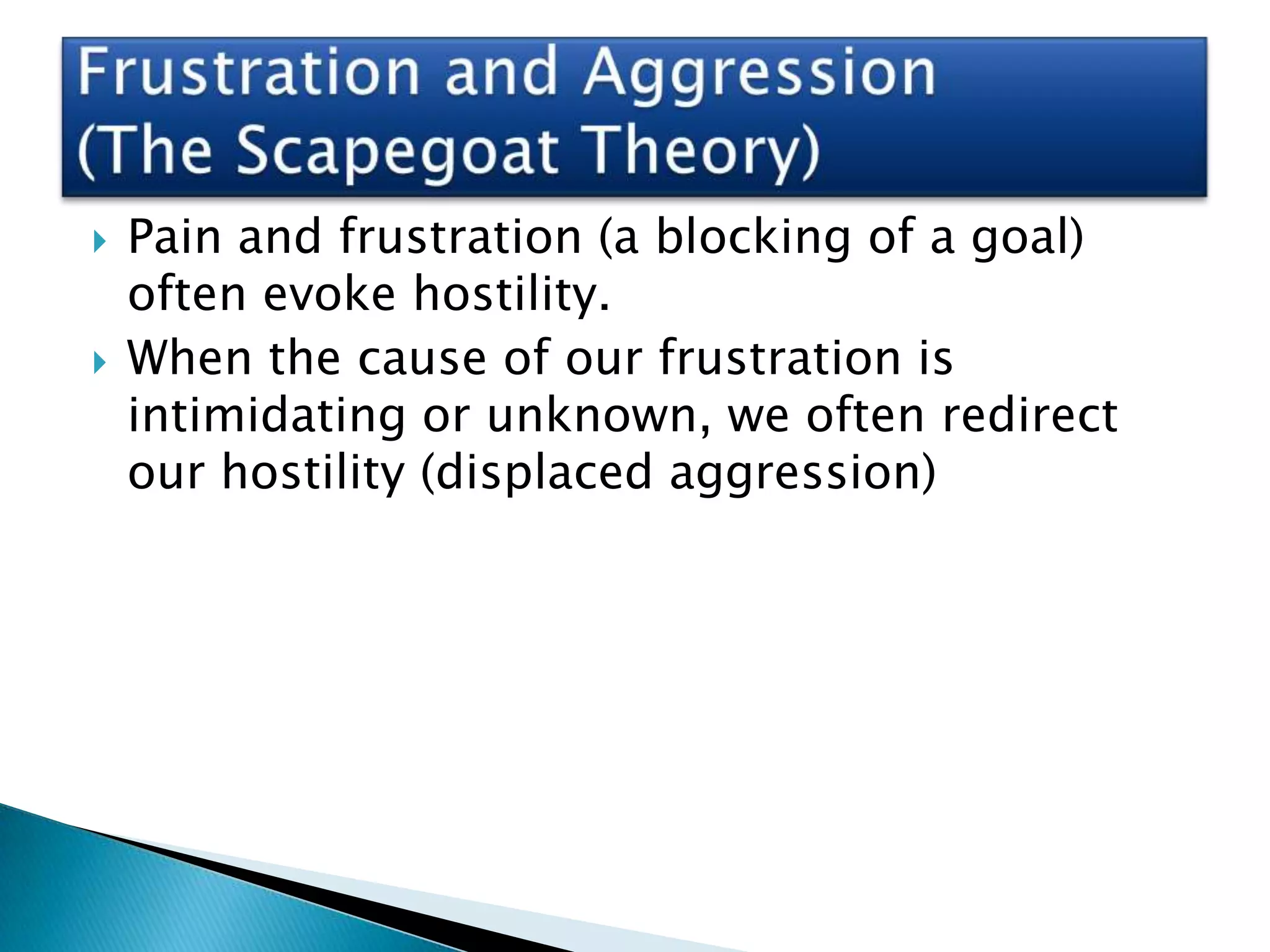- Prejudice involves negative prejudgments or feelings toward others based on their group membership rather than their individual attributes. It can stem from emotional, social, cognitive, and personality factors.
- Stereotypes are overgeneralized beliefs about groups. They can be positive or negative and become problems when incorrectly applied to individuals. Stereotype threat describes how awareness of negative stereotypes can undermine performance.
- The fundamental attribution error involves explaining others' behaviors based mainly on internal factors rather than external situational influences. This satisfies the just-world hypothesis that people get what they deserve.




























